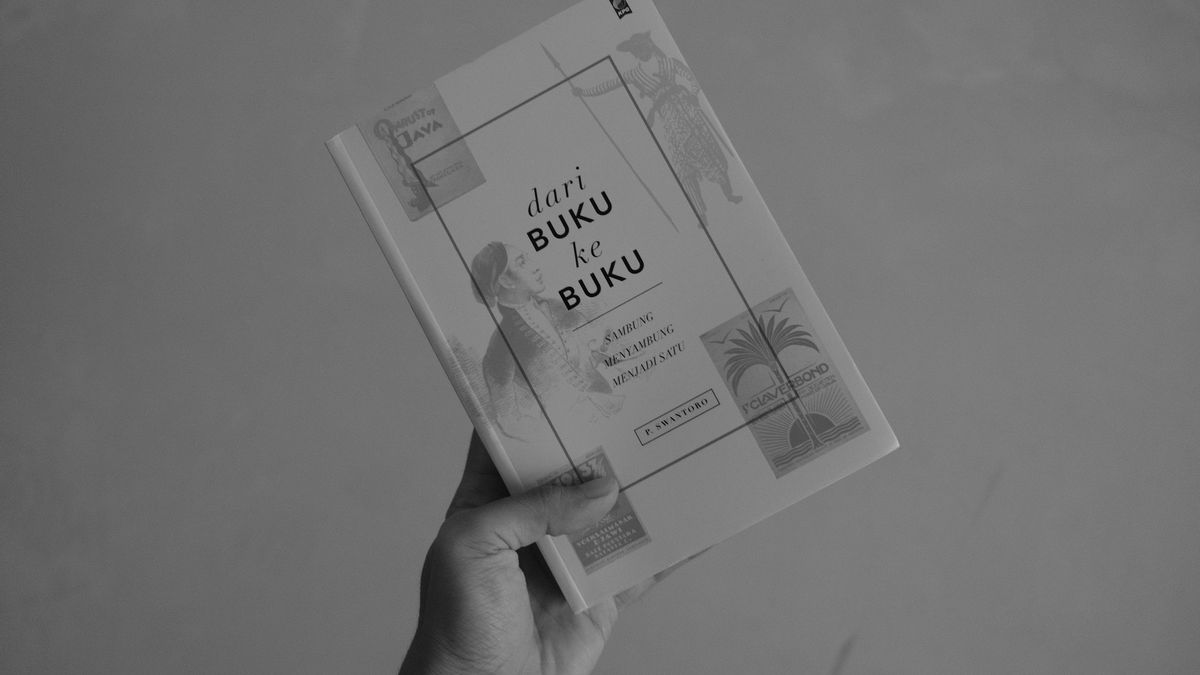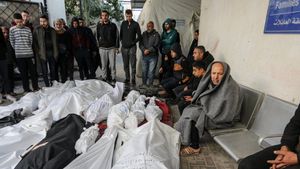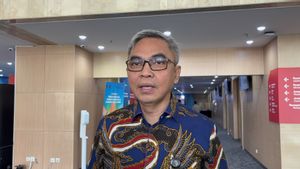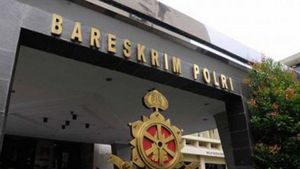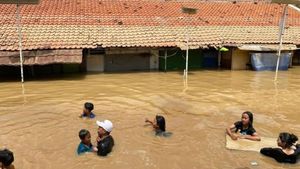JAKARTA - 'Books' - regardless of genre, books are valuable items that qualify for knowledge. Therefore, those who read books are a lucky group as echoed by a number of national leaders all over the country.
As revealed by the Indonesian writer, Goenawan Muhamad. Preserving the tradition of reading is the same as fighting against ignorance. Because, it is through books that a person can create, change, and even shape something that he considers right and must be lived.
"Reading is not like eating: there is a mouth, there is rendang Padang, there is digestion, there is excretion. Reading as 'brain food' is a misleading metaphor. Reading is arguing, creating, shaping, transforming: all at the same time also the process of bringing what to life. which is read, "said Goenawan Muhamad.
Then, in order to come to the process of reviving what is being read, at least one needs books that can provide a repository of thinking. Luckily, P. Swantoro in his book entitled From Book to Book: Connecting to One (2002), has provided references to the best books of all time.
It was noted that in the writing of this book the owner of writing used 168-200 books, journals, newspapers, magazines, and other forms of literacy. Not only that, the author cleverly links one reference to another to bridge a historical event that you want to tell a story. Whether it was from the Portuguese colonial period, the Dutch, the Japanese, to the Indonesian Independence.
Interestingly, all the topics were reviewed by the author in a distinctive storytelling style. This style was none other than P. Swantoro's wish, namely that he wanted to tell a historical event like a grandfather telling meaningful stories.
However, it is not a fairy tale that only develops through myth. However, the man who is also a former Deputy Editor of the Kompas Daily (1966-1989), always marks his story with a streak of facts while reciting the contents of the book, complete with the pages quoted by him.
The books used by him were not just books. A number of rare books that today's generation find difficult to find in bookstore windows, are widely presented. Some of them are Geïllustreerde encyclopaedie van Nederlandsch-Indië (1934), The History of Java (1817), The History of Sumatra (1783), Mohammad Hatta: Memoir (1979), and Bung Karno: Connector of Indonesian People's Tongues (1965).
The most memorable bookAs an opening, P. Swantoro started a story with a book that had filled his life as a child. At that time, the author was interested in a book in Dutch which has many unique pictures in his parents' wardrobe.
For those of you who don't speak Dutch yet, enjoying the series of pictures became his hobby as a child. Unfortunately, these books disappeared with the Japanese occupation, which did prohibit Dutch-language books.
However, when you are adults and master the Dutch language, the memory of the past with the book will keep on coming. Ultimately, through the help of a friend who is a collector of old books, the author also asked for help to find the book. For the rest, the writer describes how the book will look, because it has no memory of the title.
As a result, like a windfall, a book by the Dutchman GFE Gonggryp and five other people entitled Geïllustreerde encyclopaedie van Nederlandsch-Indië (1934), was finally obtained. Later, the author immediately devours the contents of the book. In fact, the 1,584-page book contains encyclopedias related to general knowledge of the Company era.
The pictures he saw as a child, also turned out to be symbols of a city in the old Dutch East Indies (Indonesia). Uniquely, each symbol of cities such as Cirebon, Surabaya and Batavia (Jakarta) has an explanation related to the philosophical meaning of each city.
"According to GFE Gonggryp, in this work there were seven forces that determined the history of the Dutch East Indies economy. First, its natural state. Second, the character, talents and ideas of the indigenous population. Third, the character and ideas of other nations. Fourth, population density and its changes. Fifth, division of labor in society. sixth, capital formation. Seventh, national economic events, ”he wrote on page 10.
Raffles' masterpieceAnyone who wants to learn about the whole of Java Island will certainly make Thomas Stamford Raffles' book The History of Java (1817) as a wajid reference. The owner of the book is no exception. For the author, Raffles was an important figure in the development of science in the Dutch East Indies.
The proof is, when he served as Governor General of the Dutch East Indies, Raffles revived the Bataviaasch Genootschap van Kunsten en Westenshappen scientific institute which had been suspended in Batavia. On that basis, he then studied Javanese history and culture. That is why he is admired by many people, including the famous historian Peter Boomgaard.
“Finally I felt like I was living in the environment he was telling me about. And every time I deal with something related to the 19th century, I always check what Raffles has written on that matter, "said the author, quoting Boomgaard, page 158.
Books on the History of SumatraLong before Raffles' The History of Java was born, William Marsden had written his work entitled The History of Sumatra (1783) first. The difference is, Raffles' work focuses on the history of Java Island. Meanwhile, Marsden is more about the island of Sumatra.
It is alleged that the making of The History of Java was inspired by Marsden's work. This fact is because the two works of the same era contain not only historical stories, but also various fields of life that are spread out in the areas that are the objects of writing.
“This book offers so much more than just history. In fact, this book is an encyclopedia, and this is a typical product of the Enlightenment, ”added P. Swantoro, who again used Boomgaard's opinion, page 180.
Story of the Founder of the Nation, Soekarno-HattaThe writer's admiration for the two founders of the nation, Bung Karno and Hatta, can be seen clearly by the many parts that explain their role for independence. Not only that, P. Swantoro also wrote about the personal differences between the two. However, he did not forget to mention the similarities based on two phenomenal works. First, Hatta's own work: Mohammad Hatta: Memoir (1979). Second, the work of Cindy Adams, Bung Karno: Connecting the Tongues of the Indonesian People (1965).
In one of the similarities, the writer reveals that both Soekarno and Hatta have experienced intervention from their respective mothers in their educational journey. Hatta almost didn't continue to Meer Uitgebreid Lager Onderwijs (junior high school). Meanwhile, Bung Karno barely became a Technische Hoogeschool te Bandoeng (ITB) student, but studied in the Netherlands.
"If that happened, perhaps the history of Indonesia would be different. Small events often lead to big events, ”appears on page 388.
Presumably, that's a review regarding the 474 page book. the rest of the readers will be presented with the writer's experiences across the ages with the best books. some have told at length about Prince Diponegoro, Ki Hajar Dewantara, Sutan Syarir, and a number of figures from the Netherlands and America who have an interest in Indonesia.
Detail:
Book Title: From Book To Book: Connect Becoming One
Author: P. Swantoro
First published: 2002
Publisher: Popular Gramedia Library (KPG)
Number of Pages: 474
The English, Chinese, Japanese, Arabic, and French versions are automatically generated by the AI. So there may still be inaccuracies in translating, please always see Indonesian as our main language. (system supported by DigitalSiber.id)
